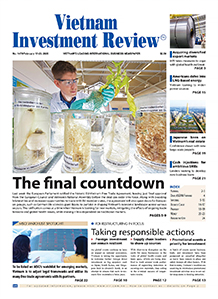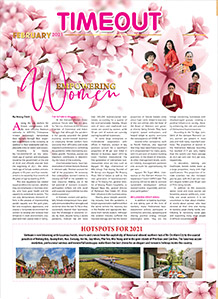Redefining journalism amid social media disruption
However, in today’s fast-changing media landscape, where platforms like Facebook, TikTok, and YouTube dominate with their speed and reach, traditional journalism faces growing pressure to redefine its role. To maintain public trust and credibility, it must adapt and reaffirm its core mission in the digital era.
 |
| Assoc. Prof. Nguyen Ngoc Oanh, dean of International Relations, Academy of Journalism and Communication |
The challenge facing journalism today goes beyond simply keeping pace with new digital platforms. It reflects a deeper shift in the way audiences access and engage with information. Social media platforms have emerged as primary news sources for a large portion of the public.
In this fast-moving environment, individual users are not only consumers of information but also content creators, capable of spreading news, opinions, and shaping narratives in real time. Although much of this user-generated content lacks editorial scrutiny or depth, it effectively caters to the growing demand for immediacy.
Yet, the very speed at which content travels on social media highlights the continued importance of traditional journalism. As information spreads rapidly, often without verification, the role of professional news outlets in fact-checking, adding context, and shaping balanced public discourse becomes increasingly vital. The consistent habit of turning to mainstream media to confirm what is seen online reaffirms the trust and credibility that journalism must work to maintain in today’s digital information landscape.
As digital transformation continues to accelerate, journalism must not remain on the sidelines. Instead, it must actively embrace technological advancements and make effective use of digital platforms, all while upholding its core values of accuracy, integrity, and public service. This approach is no longer simply a strategy for survival, it is essential for journalism to maintain its influence
In this context, mainstream media and social networks are increasingly intertwined. Rather than competing, they coexist within a shared media ecosystem, complementing each other in delivering information to diverse audiences. Leading news organisations are now actively using social media as key distribution channels. The rise in verified “blue tick” accounts reflects efforts to enhance visibility, strengthen editorial credibility, and build trust with the digital public.
To regain audience attention and reinforce its role amid the dominance of social networks, journalism must reaffirm its position as a primary and trusted source of information. This requires the consistent delivery of high-quality content, truthful, credible, and offering well-balanced, multidimensional perspectives that go beyond the immediacy of user-generated content.
Alongside content quality, the protection of copyright must be prioritised. Professional news must be distributed within clear, enforceable copyright frameworks to uphold intellectual property rights and safeguard the integrity of journalistic output in the digital environment.
Equally important is the development of sustainable monetisation models. Generating revenue directly from audiences and digital distribution channels will allow media outlets to reinvest in newsroom capacity, maintain editorial independence, and ensure long-term content quality and innovation.
While social media remains a hub for unverified information, the responsibility of traditional journalism is to ensure accuracy and serve as a trusted source of truth. Newsrooms must find ways to collaborate with social platforms while maintaining their watchdog function and ensuring information integrity.
For today’s young journalists, the core challenge does not lie in technology itself, but in upholding integrity in an increasingly digitised newsroom. The task is to ensure that reporting remains accurate, while delivering context, depth, and proper verification. As AI-powered tools like ChatGPT become more prevalent, their value lies in enhancing, not replacing, human judgement and professional responsibility.
Although discussions around AI often raise concerns about its impact on journalism, there is currently no substantive evidence to suggest that it threatens the core role of journalists. However, AI is sometimes portrayed in public discourse as a disruptive force with the potential to displace human professionals. Such perceptions, though not grounded in industry practice, may contribute to cautious attitudes or slow adoption of new technologies within certain newsrooms.
In practice, AI is emerging as a tool to support and enhance newsroom operations. When used strategically, it can streamline workflows, assist in transcribing interviews, summarise large volumes of data, and generate initial content drafts, all of which contribute to improving the efficiency of news production.
The critical factor, however, remains human oversight. Journalists must retain editorial control and apply ethical judgement to ensure content produced or supported by AI aligns with the principles of accuracy, impartiality, and public interest. Without this guiding framework, there is a risk that automation could compromise the very standards that distinguish credible journalism from unverified or manipulative content.
Ultimately, the role of AI in journalism is best understood not as a replacement for human professionals, but as a means of amplifying their capabilities. When governed by clear editorial standards and professional responsibility, AI can help strengthen journalism’s enduring mission, to inform the public truthfully, reliably, and with integrity in a rapidly changing media environment.
What the stars mean:
★ Poor ★ ★ Promising ★★★ Good ★★★★ Very good ★★★★★ Exceptional
 Tag:
Tag:
Related Contents
Latest News
More News
- Protect what’s next: towards a future free from meningococcal group B disease (December 05, 2025 | 18:00)
- New ILO report offers policy recommendations for disability inclusion (December 04, 2025 | 15:18)
- Maternal job loss may affect children’s mental health, research shows (December 03, 2025 | 19:11)
- Women lead Vietnam’s shift to climate-resilient agriculture (December 03, 2025 | 19:10)
- Experts highlight unpaid care work as key barrier to gender equality (December 03, 2025 | 15:15)
- Opportunities and inequalities for women workers in Vietnam's garment industry (December 03, 2025 | 09:00)
- Vietjet flights carry love to devastated central region (November 28, 2025 | 11:35)
- New initiative to boost the fight against domestic violence (November 26, 2025 | 10:00)
- South Korea funds IOM relief for Vietnam’s typhoon-affected communities (November 24, 2025 | 15:33)
- AI and human-centred values set to shape the future of HR in Vietnam (November 21, 2025 | 18:04)























 Mobile Version
Mobile Version